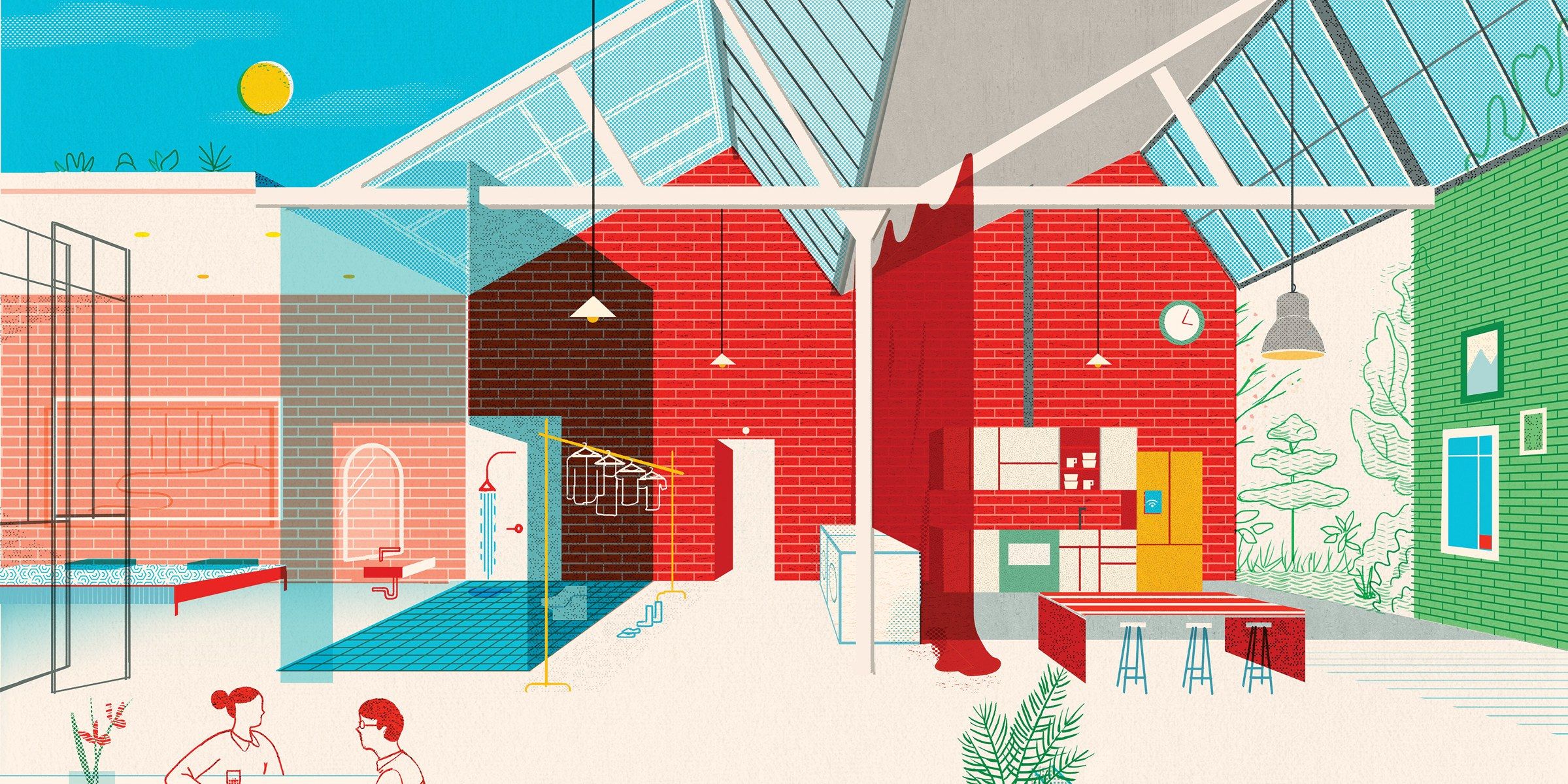Robots can walk, talk, run a hotel … and are entirely stumped by a doorknob. Or a mailbox. Or a dirty bathtub—zzzzt, dead. Sure, the SpotMini, a doglike domestic helper from Boston Dynamics, can climb stairs, but it struggles to reliably hand over a can of soda. That’s why some roboticists think the field needs to flip its perspective. “There are two approaches to building robots,” says Maya Cakmak, a researcher at the University of Washington. “Make the robot more humanlike to handle the environment, or design the environment to make it a better fit for the robot.” Cakmak pursues the latter, and to do that, she studies so-called universal design—the ways in which buildings and products are constructed for older people or those with disabilities. Robot can’t handle the twisting staircase? Put in a ramp. As for that pesky doorknob? Make entryways motion-activated. If you want droids at your beck and call someday, start thinking about robo-fitting your digs now.
1. Wide-Open Floor Plan Any serious sans-human housekeeping needs a wheeled robotic butler with arms, Cakmak says. That means fewer steps, plus hallways wide enough for U-turns. Oh, and hardwood floors. Thick carpeting slows a bot’s roll.
2. Visual Waypoints Factory robots work so fast in part because their world is highly structured—conveyor belt here, truck over there. So for your robo-home, create landmarks that anchor the bots in space—a prominent light fixture, say, that tells them, “You’re in the dining room.” (RFID tags will help bots locate smaller objects, like cleaning supplies.)
